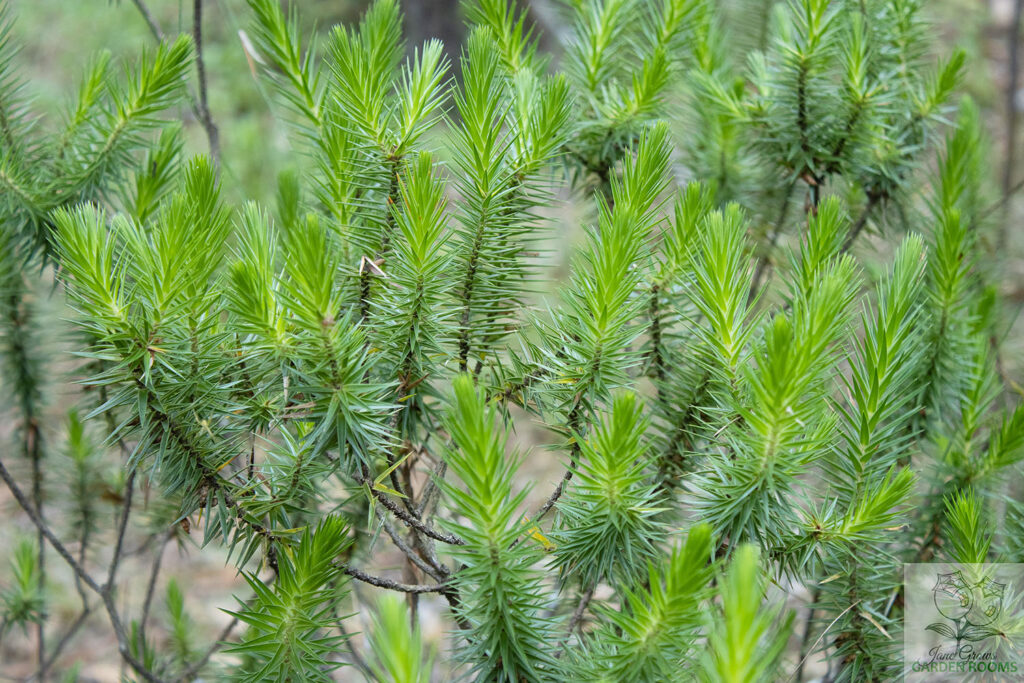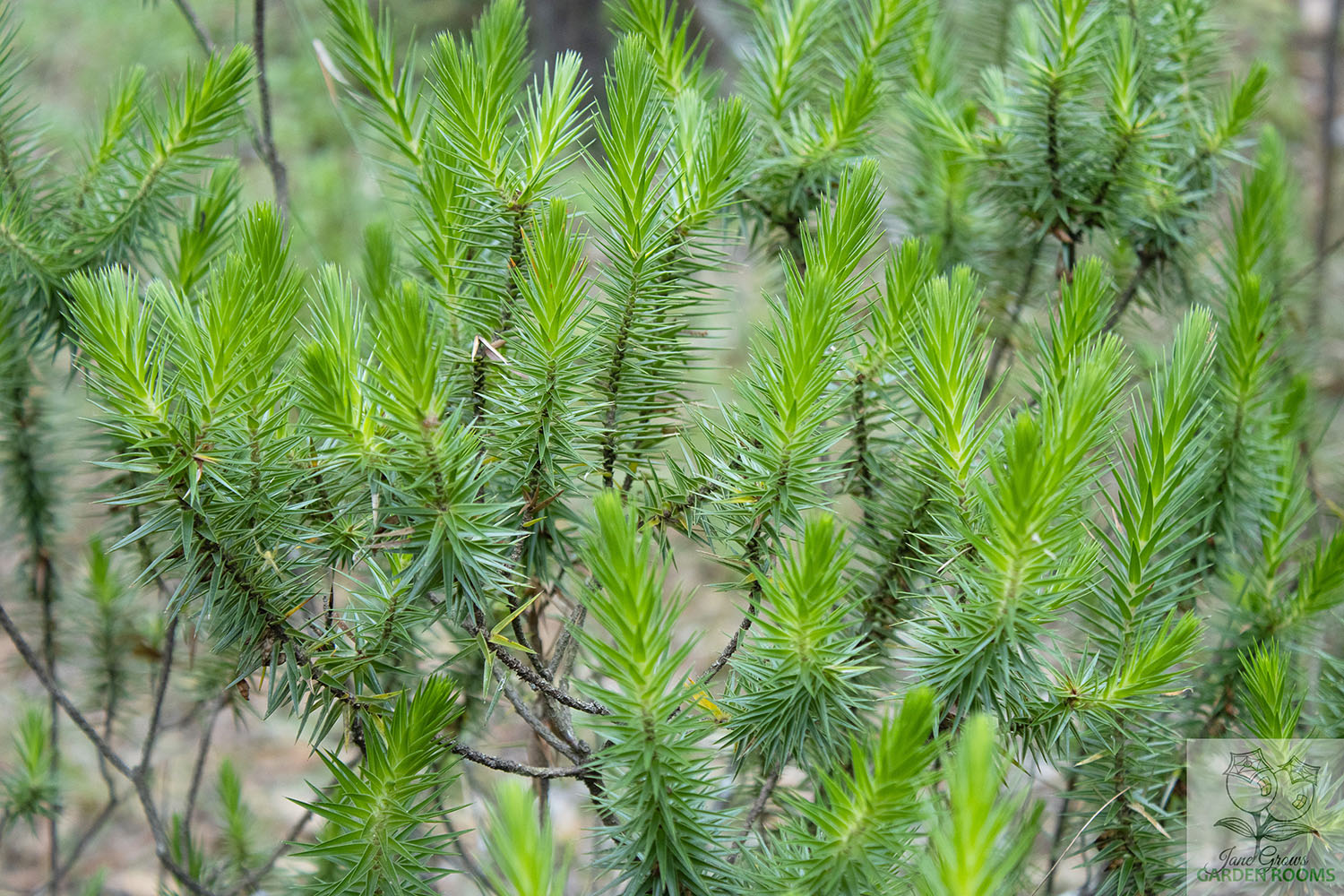Spiky Leaves Give Small Birds Safe Haven …
This plant is not a pleasant one to accidentally brush against in the bush, but it’s an important plant for small birds. Melichrus urceolatus is known as Prickly Urn Heath or Honey Gland Heath and it’s hard spiky leaves are important to small birds in more ways than one.
It is a dwarf shrub, usually less than one metre tall and one metre wide. A fully grown bush creates a network of spikes that small birds can navigate but their larger winged predators, like crows and kookaburras, can not. This gives them safe haven in a chase and in some cases a perfect nesting site.

The Latin name links closely to the common names. “Meli” is Latin for honey and is thought to refer to the generous nectar load in each flower which is shaped like an urn or tall rounded vase. Urceolatus means urn-shaped.
Prickly Urn Heath flowers in the Tamborine area sporadically throughout the year and not much is known about how it is pollinated. During the Winter months, its urn-shaped flowers are a perfect nectar source for small birds when little else is flowering. The long urn shape of the flower suggests that it relies on these winged friends for pollination but with few observations and little research it’s hard to do more than theorise.
The species itself grows from the Atherton Tablelands all the way along the coast to Victoria and is also distributed inland in woodland and heath environments. Depending on its location, the length of leaves and growth habit varies. The photograph shows the variety observed in Tamborine. Despite its wide distribution the Genomics for Australian Plants project indicates that this important plant is threatened by human impact which would be devastating for the organisms that rely upon it.
In fire-prone areas it is one of the first plants to regenerate offering protection to small animals and nectar to nectivores.

